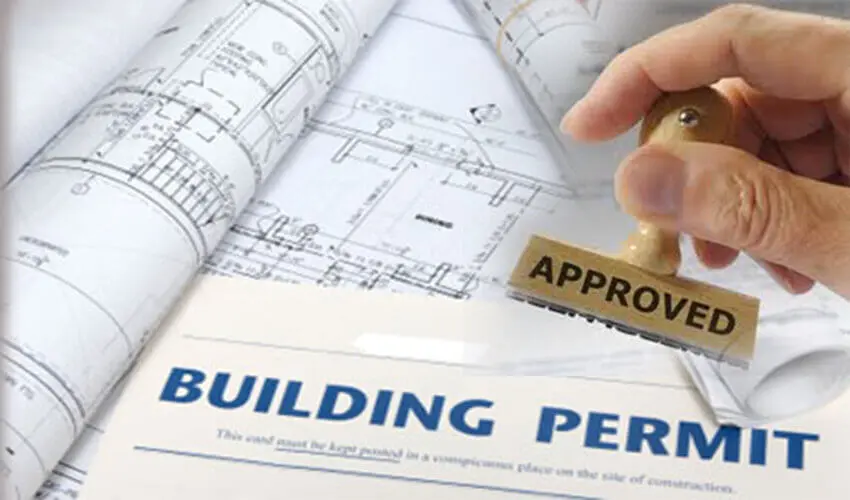Sign Permits
In the city of Los Angeles, you can't install a sign on your building without receiving a government permit. This includes roof signs, wall signs, marquees, banners, billboards and freestanding signs. Whether it's temporary or permanent, your sign must meet government codes for size, materials, appearance and safety.

Filling out a permits application is a long, time-consuming process that involves supplying dimensions, signing documents and preparing for a sign inspection. Instead of taking time away from your business, hire sign permit services in Los Angeles. The Los Angeles Sign Company deals with licenses, inspections, permits and documents on your behalf.
Which Signs Require Permits?
The Los Angeles Department of Building and Safety requires permits for over a dozen types of signs, including the following:
- Digital signs that use plasma screens, fiber optics, grid lights and other technology to portray a still or moving image
- Awning signs that hang over the building entrance
- Murals, including public art projects, original murals painted directly onto the wall and murals that an artist painted prior to the code update
- Projectors attached to your building that display an image on another wall
- Inflatable signs attached to the building with a motor that blows air into the device
- Mall signs located inside the building
- Model home signs with information about the location
- Wall signs attached to the side of the store
- Revolving signs that require an electric permit
- Roof signs that hang over the exterior wall
- Pole signs attached to one or two poles that are raised above the ground
- Monument signs that educate the public about the structure
Some of these types, like wall and pole signs, have extensive regulations. The Los Angeles Sign Company keeps track of these regulations so you don't have to spend time searching through codes.
Why Do You Need a Sign Permit?
You need a sign permit to protect public safety. If you install a sign incorrectly, add flashing lights or hang a sign over a fire escape, you put the general public at risk. This could lead to injuries and lawsuits, making you wish that you complied with signage codes in the first place.
Similarly, sign permits keep the outside of your business attractive. While you can design the sign however you want, the codes prevent store owners from cramming too many signs in one place, installing huge signs that ruin the building's aesthetic and including unattractive features like strobe lights. Following codes might be a hassle, but it benefits your store in the long run.
How Do You Apply for a Sign Permit?
To start, you'll sign the initial document and obtain a Pre-Sign Inspection (PSI) for every sign. You'll show the government a plan for your sign that includes lot dimensions, building dimensions and the size and location for new and existing signs. You'll also need structural plans signed by an engineer or architect to confirm the foundation, sign materials and the way you'll attach it to the building. Finally, you'll request a plan check review and your sign permit.
Which Signs Are Prohibited?
Los Angeles prohibits certain types of signs that cause a disturbance or endanger public safety. This includes signs with loud noises, obscenities, odors, flashing lights and live animals. Likewise, you can't attach commercial signs to a trailer or vehicle unless they meet certain requirements.
Similarly, Los Angeles prohibits signs installed in certain locations even if they meet the other requirements. You can't install signs in alleys, public ways, visibility triangles or airport hazard areas. Likewise, you can't install signs that obstruct doors, windows, exits and fire escapes. Signs near electrical conductors and the edge of roadways are also prohibited.
What About Temporary Signs?
Temporary signs still have to comply with government regulations. This includes signs, banners, streamers, ribbons and pennants that announce temporary events like a sale or grand opening. According to Los Angeles codes, a sign is "temporary" if you keep it up for less than 30 days and don't reinstall it within 30 days of removal. Talk to the Los Angeles Sign Company to learn more about the specifics.
Which Signs Don't Require a Permit?
Signs smaller than 20 square feet attached to the ground with no electrical parts don't require a permit. If you have multiple signs, they must be at least 15' apart. Additionally, legal notices don't require a permit. Temporary signs related to politics or non-commercial uses don't require a permit unless they're hooked up to electricity.
Generally, signs on residential properties don't require a permit, but some exclusions apply. If you're not sure if your sign needs a permit, reach out to the Los Angeles Sign Company. We'll tell you if you need a permit, then launch the application process if necessary.
Why Hire the Los Angeles Sign Company?
Los Angeles building codes include restrictions for virtually every aspect of your sign, including size, location, text design, lights, special effects and the number of signs in one area. To make matters more confusing, each type of sign has a specific set of regulations. Some signs require additional permits, particularly if you're dealing with electricity.
The Los Angeles Sign Company offers extensive knowledge of local codes so you can build your sign right the first time instead of making constant adjustments. We also deal with permits, documents and paperwork, virtually eliminating the risk of filling out a form incorrectly. Preventing hours of stress and frustration is worth your investment.